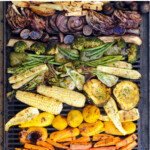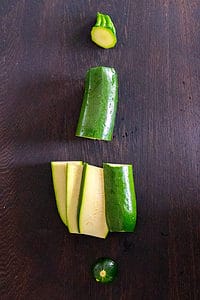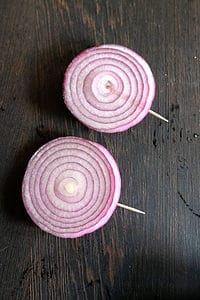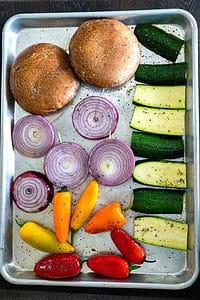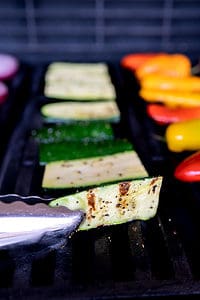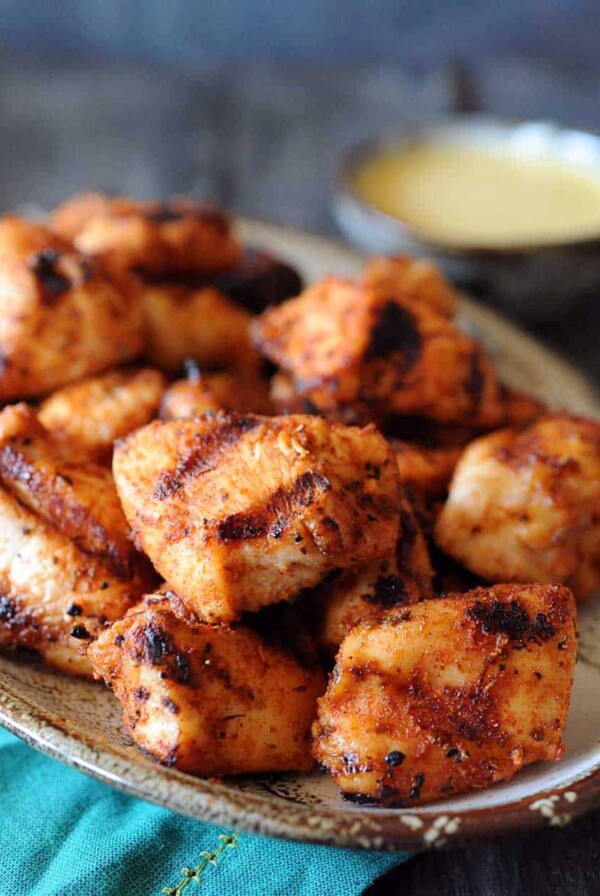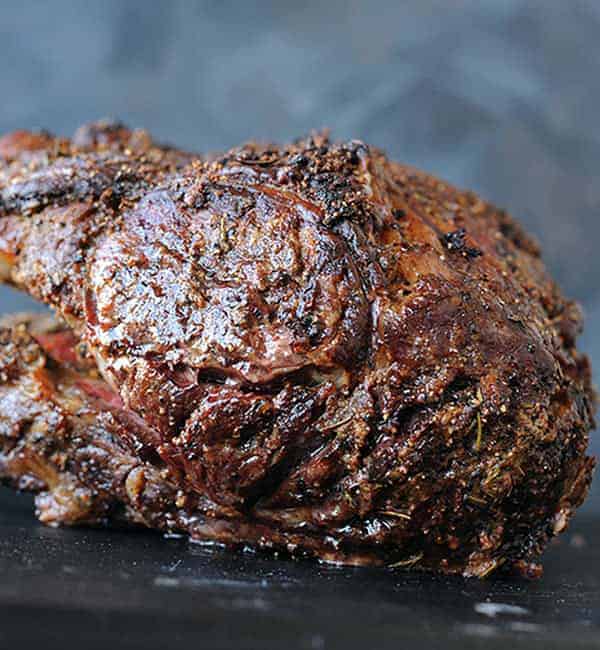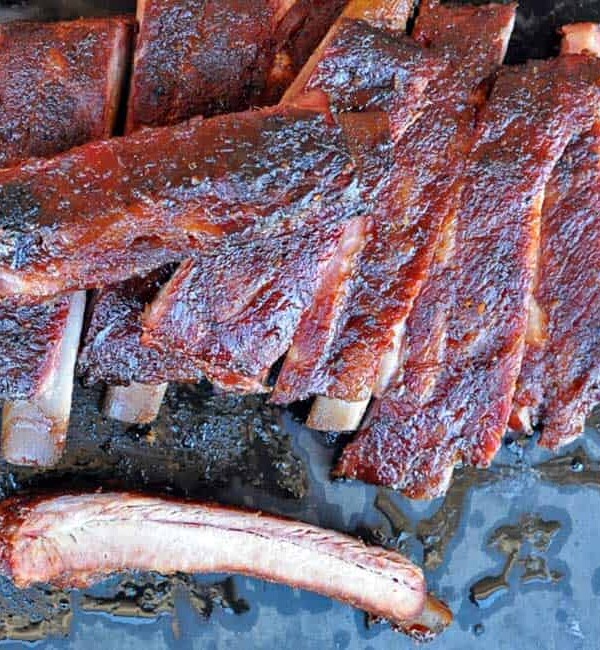This post may contain affiliate links which help support Girls Can Grill.
You can easily make 20 different grilled vegetables using the same cooking technique and just three extra ingredients.
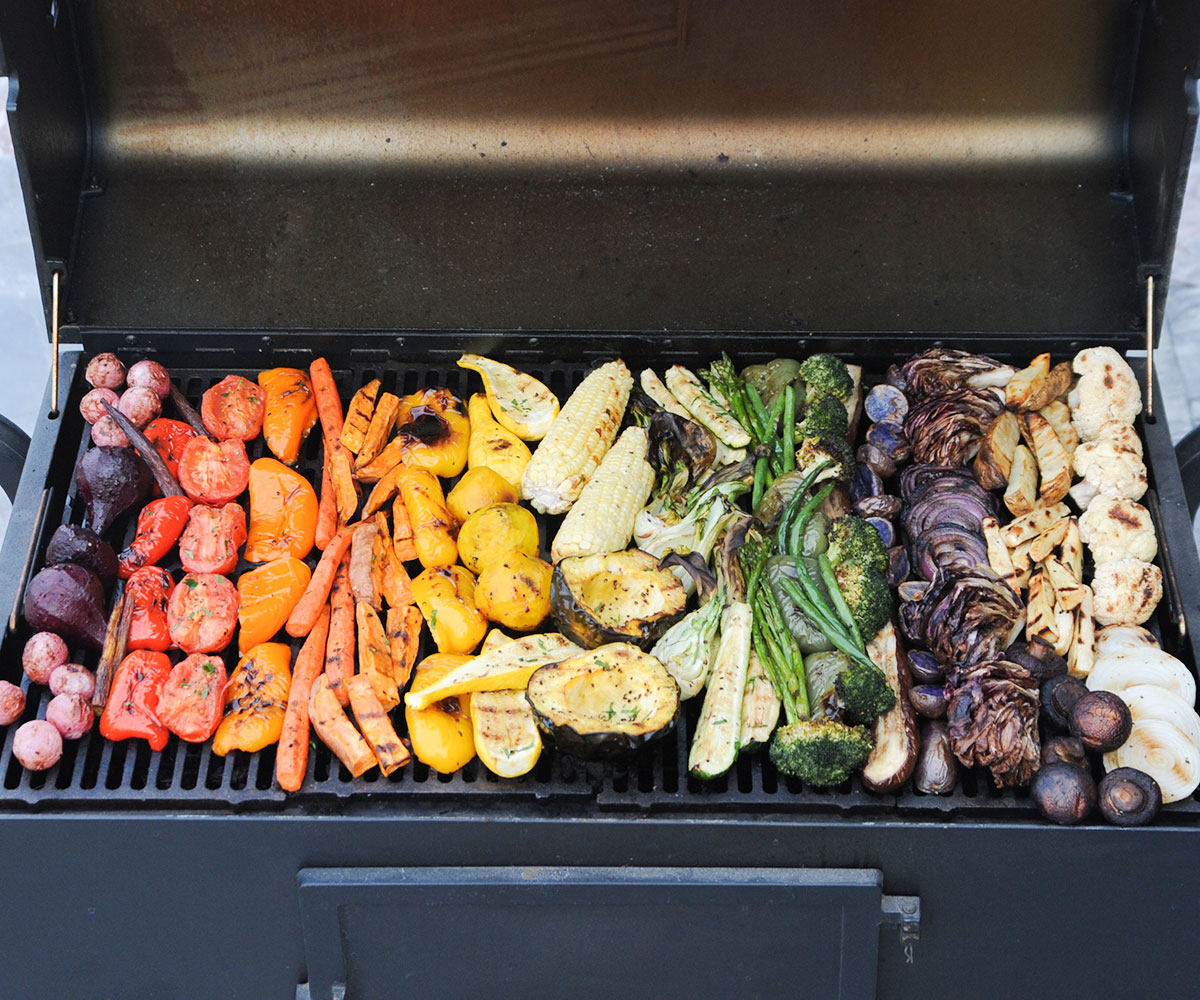
Save this BBQ Tip
Enter your email, and I’ll send this link directly to your inbox. Plus, you’ll get new BBQ recipes and tips weekly.
Table of Contents
The USDA recommends adults eat 2-4 cups of vegetables a day. So why is it so darn hard to make vegetables taste good?
We all know the benefits…
The problem is a plate of flavorless vegetables isn’t as enticing as a bag of potato chips or a bowl of macaroni and cheese.
We walk down the produce aisle and look at the stunning rainbow of possibilities, but most of the time, we only grab a few things we’re familiar with.
If more than 25 percent of our plate is supposed to include vegetables, shouldn’t 25 percent of our grocery cart include them, as well?
Different ways to cook vegetables and the pros and cons
Vegetables are so versatile they can be cooked using many different methods. My favorite is of course cooking them on the grill.
Grilling: When you grill a vegetable, magic happens. The grill releases the vegetables’ natural sugars and juices and forms a caramelized yummy char. The only con is that sometimes the thin ones can slip between the grates.
Steaming or Boiling: If you grew up with steamed veggies, you probably have memories of flavorless, off-colored hospital-like food. That’s because if vegetables are cooked too long in steam or boiling water, they lose their flavor, color and texture.
Microwaving: Using the microwave is a quick and easy process, and microwaved vegetables tend to have better color and texture than boiled veggies, but sometimes the microwave cooks them unevenly, and they can lack flavor.
Roasting: Cooking vegetables in a single layer on a pan in the oven is as close as you can get to grilling. The oven reveals the natural sugars, but unless you flip them on the pan, the bottoms can get mushy while the tops crisp.
Sautéing: Cooking veggies in a skillet is a good alternative, but it requires using more oil and/or butter, and it doesn’t work for every vegetable. You can’t exactly sauté an artichoke half.
20 vegetables that are great grilled
I can’t think of a vegetable that can’t be grilled. Here are the 20 best vegetables for grilling that are pretty readily available at your local grocery store.
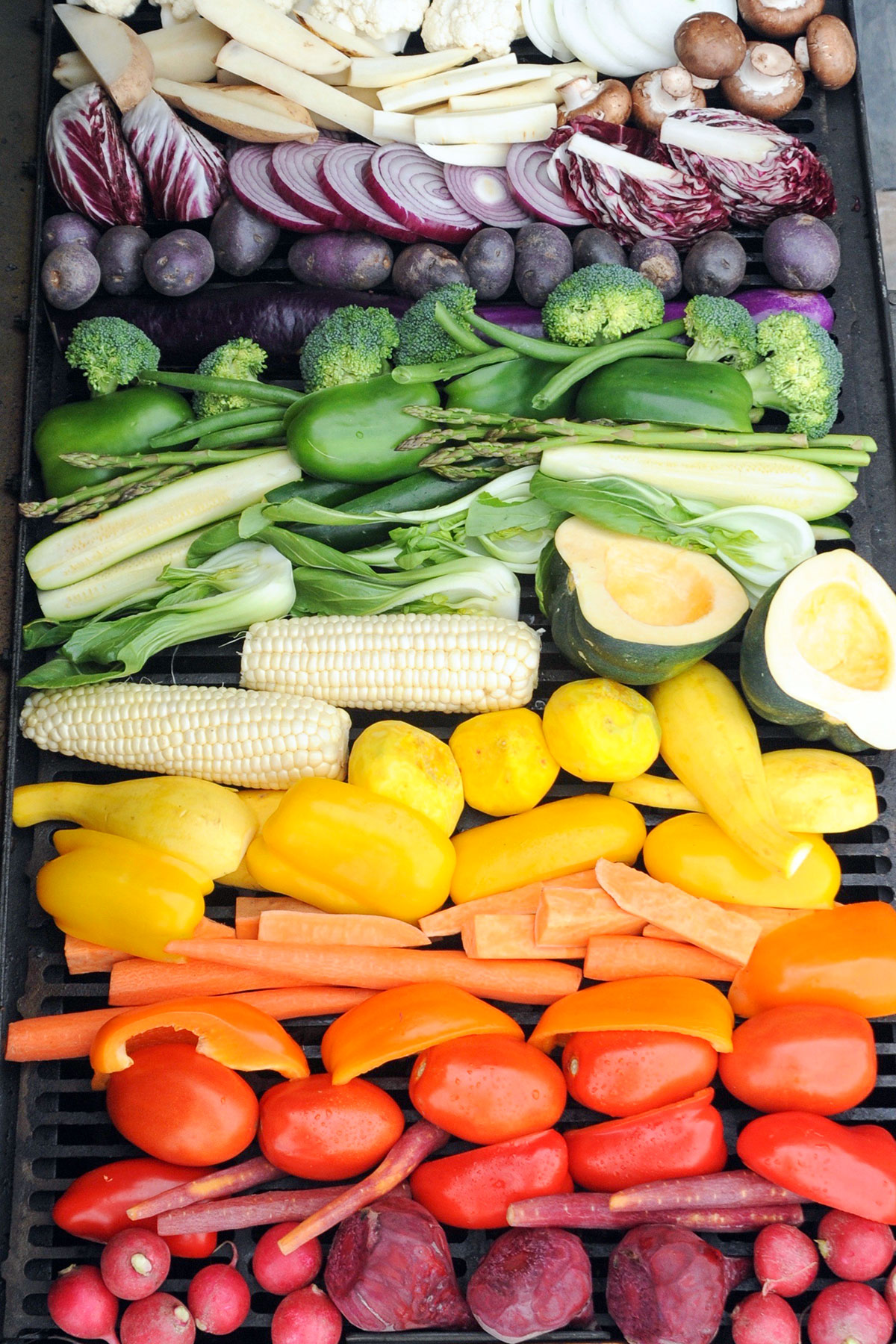
Click on the vegetable name to jump to the complete recipe.
- Acorn Squash: Cook in halves, rings or quarters
- Asparagus: Place on the grill perpendicular to the grates so they don’t slip through or use a veggie basket
- Beets: Grill then peel; delicious in salads
- Bok Choy: A small Asian cabbage; slice in half before grilling
- Broccoli: Slice the entire head into 1/2-inch thick pieces to create steaks or grill the florets
- Carrots: Peel and grill whole
- Cauliflower: Slice the entire head into 1/2-inch thick pieces to create steaks or grill the florets
- Corn: Shuck and grill whole
- Eggplant: Slice Japanese eggplant vertically and English eggplant horizontally
- Green Beans: These are best grilled in a grilling basket so they don’t slip through the grates
- Mushrooms: Grill without slicing; great for adding umami to any dish
- Radicchio: This tart veg becomes sweeter once grilled and is vibrant
- Radishes: As these grill, they soften and caramelize
- Onions: Try white onions, yellow onions or red onions, great grilled in slices; you can use toothpicks to keep the rings together. Green onions are best grilled whole
- Parsnips: Similar to carrots, these are earthy and slightly sweet; peel and grill whole
- Peppers: Slice green, yellow and red bell peppers in wedges; cook chile peppers whole
- Potatoes: Super versatile; grill whole, halved, wedged or in strips
- Tomatoes: Larger tomatoes can be grilled whole or sliced in half; cherry tomatoes cook best in a grill pan
- Yellow Squash: Great grilled in strips, chips or wedges
- Zucchini: Like yellow squash, these are great grilled in strips, chips or wedges
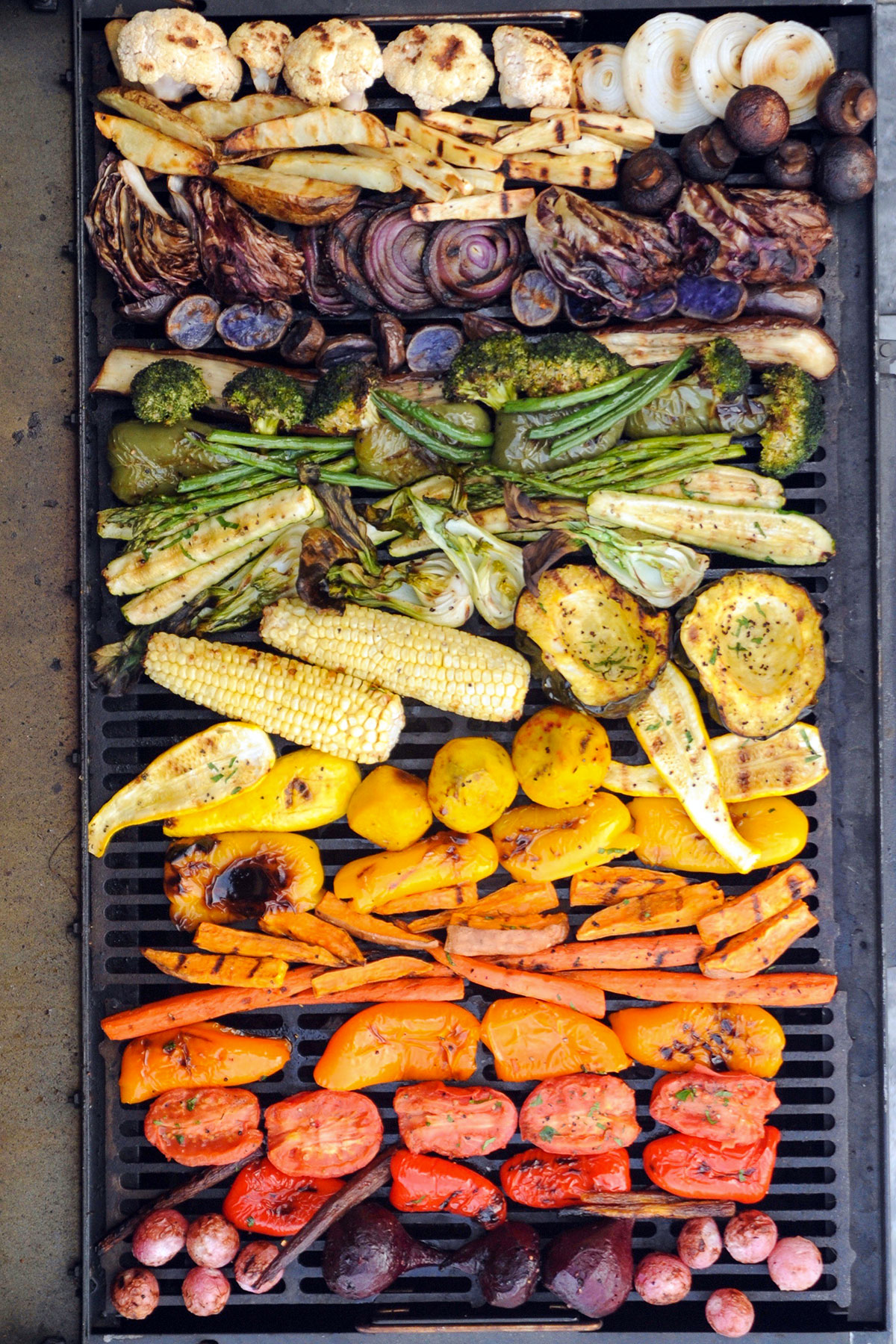
How to grill vegetables
- STEP ONE: First, clean and cut the fresh vegetables. Potatoes and zucchini do well as wedges or slices. Carrots, corn and beets can be grilled whole. For eggplant and squashes, I like to cut them in half.
- STEP TWO: Place veggies on a sheet pan or in a large bowl. Drizzle them with a little healthy olive oil, so they won’t stick to the grill, and season with kosher salt and coarse-ground black pepper.
PRO TIP: If you’re not using kosher salt yet, you should really give it a try. It adds so much more flavor than table salt.
- STEP THREE: Heat your grill to about 400F degrees. You can use a gas grill, charcoal grill, ceramic cooker, pellet grill or Ninja grill. If you don’t have a grill yet – we need to talk – but you can use a grill pan on the stovetop set to medium-high.
- STEP FOUR: Place vegetables on the hot grill and follow the suggested grilling times with each recipe or use the the infographic included with this post. Most veggies can be grilled in up in 15 minutes or less.
PRO TIP: For thin vegetables, consider using a vegetable grill basket so they don’t slip through the grate.
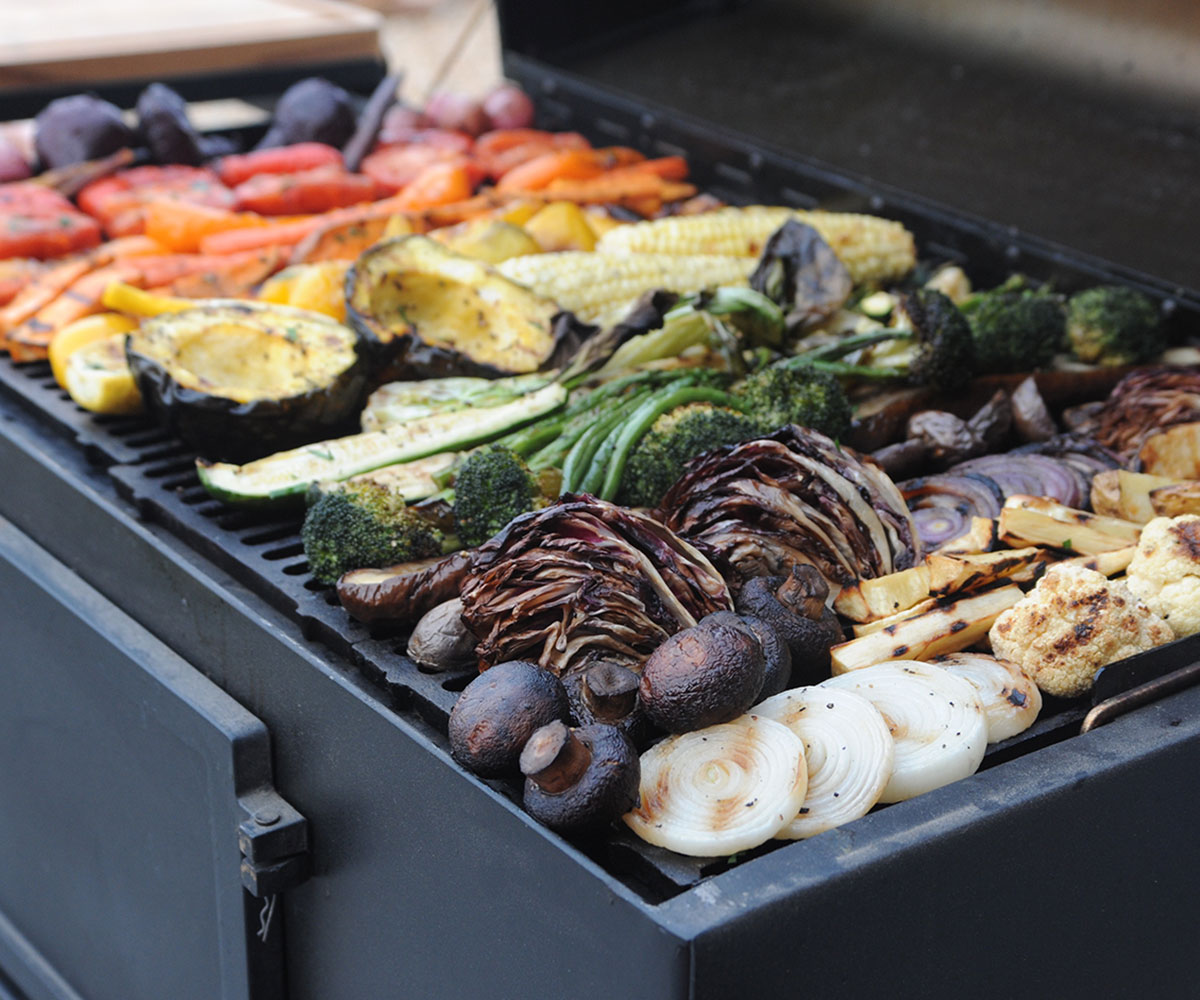
You’re going to end up with tender veggies adorned with impressive grill marks. They’ll be too pretty to resist.
- STEP FIVE: Veggies are awesome with just salt and pepper, but if you have some skeptical eaters at the table, drizzle them with lemon juice, fresh herbs, soy sauce or a little dressing or balsamic vinegar for even more pizazz.
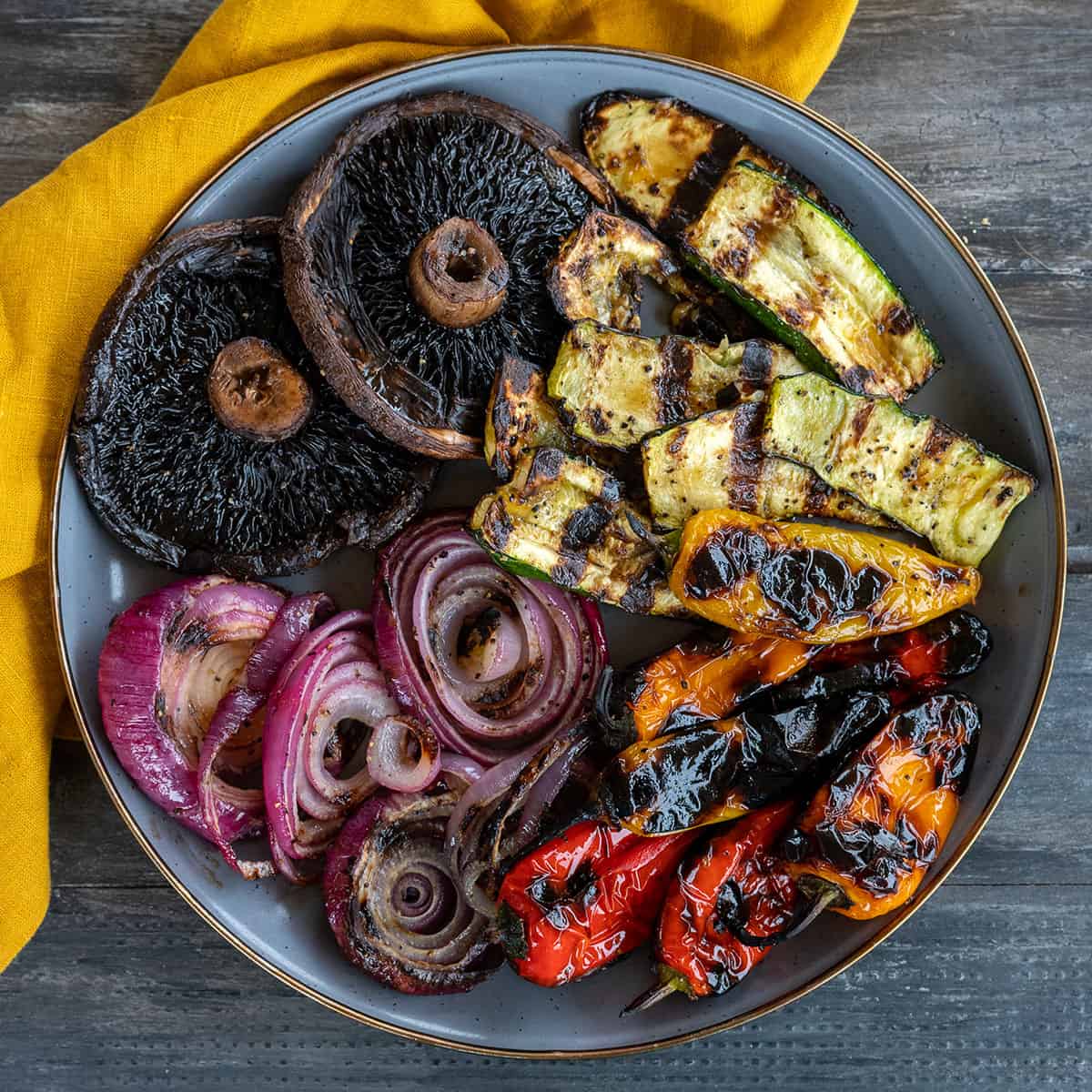
3 bonuses to grilling veggies
They’re great hot or cold
I like to grill up a garden full of veggies on the weekend and then use them in salads for lunches all week long.
A salad topped with grilled eggplant or grilled beets and carrots is so much tastier than the standard raw alternative.
Feed one or feed an Army
With this easy grilling technique, you can grill up three carrots or 20, and it takes the same amount of time. So now, you can grill up a simple, gorgeous side for a yourself or for a nice date night.
Feeding the family? Grill up 5 ears of corn, or better yet, let your kids pick out their own personal vegetables next time you go shopping. Then, you can grill up their “special” veggie just for them.
Clean up is a breeze
All you need is a bowl or sheet pan to season the vegetables with olive oil, salt and pepper. Once the veggies are done grilling, you can add them back to the same bowl or pan and serve them straight from there.
Try the veggie challenge
- Hit the veggie aisle
- Grab one or two vegetables you haven’t tried
- Follow these easy grilling steps
- Pat yourself on the back; you’ve now created a healthy side dish that tastes good and is really good for you
Infographic
Print out, save or bookmark the below vegetable recipe infographic to help you next time you want to make grilled vegetables. It includes five homemade dressing recipes.

Storage
I recommend grilling enough vegetables, so you have leftovers to use throughout the week. Store them in an airtight container in the refrigerator for up to five days.
You can mix them into omelets, burritos, rice, pasta and salads.
You can also freeze grilled vegetables for a few months, but they quickly lose their texture and vivid color.
GCG Pro Pitmaster Tips
- Cut your vegetables evenly for even cooking
- Cook over a high heat, turning occasionally
- Potatoes and beets are ready when the internal temperature reaches 205-210F degrees
- Use a grill basket for smaller vegetables
Frequently Asked Questions
Cook times vary depending on the type of vegetable. Tomatoes, summer squashes, mushrooms and green beans cook in less than 10 minutes. Cauliflower, broccoli and carrots can take 15-20 minutes. Harder vegetables like potatoes, winter squashes and beets can take 45 minutes to an hour.
While it’s safe to leave grilled vegetables at room temperature for a couple of hours, the CDC recommends storing them in the refrigerator within two hours after you cut, peel or cook them.
Yes. By nature, all vegetables are low in calories and fat. It’s what you add to them (like butter and dressings) that makes them less healthy. The good news is that grilling veggies brings out their natural sugars, so you they taste great on their own.
When it comes to the keto diet, not all veggies are created equal. Some vegetables like potatoes, carrots and corn have more carbohydrates and are not as keto friendly. Vegetables like asparagus, eggplant, peppers and tomatoes have fewer carbs. It’s best to look up the nutritional information for each vegetable to see if it fits within your diet. The Girls Can Grill cooking method only uses olive oil, salt and pepper, so no additional sugars are added.
More grilled vegetables recipes
- Grilled Balsamic Brussels Sprouts
- Chorizo Hot Maple Grilled Sweet Potatoes
- Bacon Wrapped Grilled Delicata Squash Rings
- Grilled Mini Hasselback Potatoes
- How to Cook Roasted Hatch Peppers
Want even more great grilling recipes and tips? Subscribe to my newsletter and follow me on Facebook, Instagram and TikTok for my latest grilling adventures. If you make a recipe, please leave a comment and rating below.
Save this BBQ Tip
Enter your email, and I’ll send this link directly to your inbox. Plus, you’ll get new BBQ recipes and tips weekly.
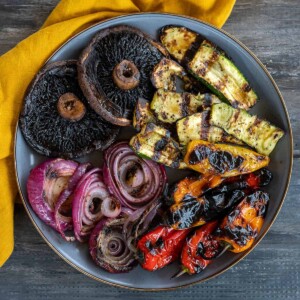
Grilled Vegetables
Ingredients
- 2 portabello mushrooms
- 1 zucchini
- 1 red onion
- 7 mini sweet bell peppers
- 3 tbsp olive oil
- 1 tsp kosher salt
- 1/2 tsp black pepper
- 1 tbsp balsamic vinegar
Instructions
- Prep: Rinse and pat dry all of the veggies, except for the mushrooms.
- Slice Zucchini: Slice off the ends. Cut the zucchini in half. Cut each half into 4 vertical slices.
- Slice Onion: Cut off the ends of the onion. Remove the skin. Slice into 1/4 to 1/2-inch thick rings.
- Secure Rings: Insert a toothpick into each onion ring to help keep it intact on the grill.
- Season: Place the veggies on a sheet pan and drizzle with olive oil. Sprinkle both sides with salt and pepper.
- Heat Grill: Heat the grill to high or 400F degrees with direct heat.
- Grill: Place the veggies on the grill in a single layer. Start with the mushrooms cap side up. Grill for 4-5 minutes, until grill marks form. Flip. Grill for 4-5 more minutes.
- Serve: Remove the grilled vegetables to a plate. Leave whole or slice into smaller pieces, removing the pepper stems and toothpicks. Drizzle with balsamic vinegar.
Notes
Nutrition
Nutrition information is automatically calculated, so should only be used as an approximation.
